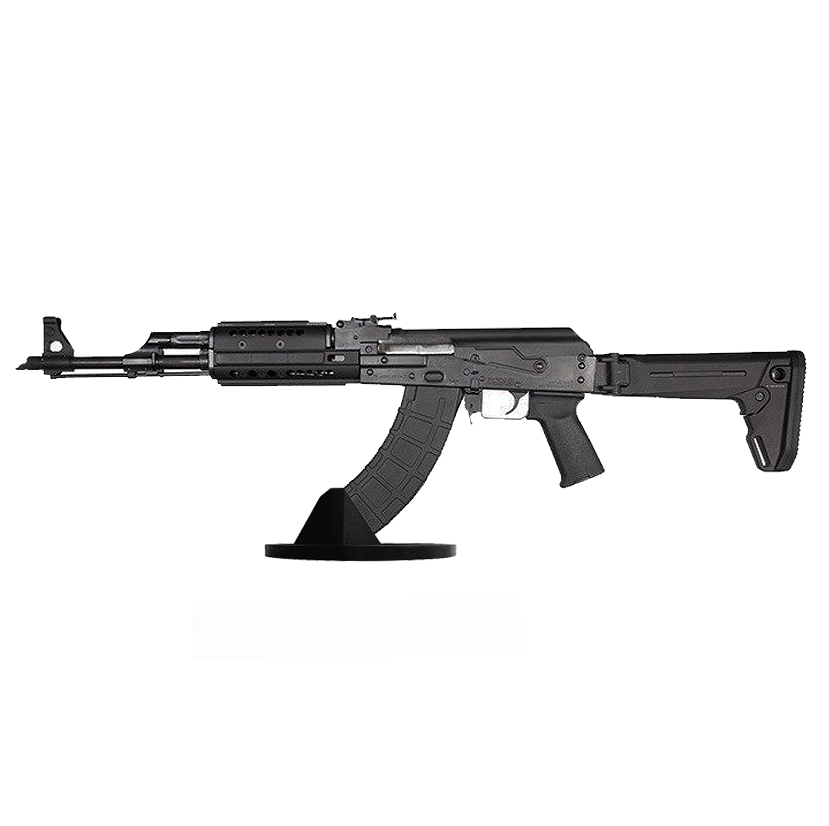
Categories:
Proper gun disposal is a critical aspect of responsible gun ownership. It involves taking necessary precautions to ensure that unwanted or unused guns are safely and permanently removed from circulation. The significance of proper gun disposal cannot be overstated, as it directly contributes to public safety and the prevention of accidents, crimes, and tragedies. One key reason for proper gun disposal is the risk of accidental discharge.
Guns can be dangerous if mishandled or improperly stored. Unintentional discharges can occur when guns are not properly maintained or when inexperienced individuals come into contact with them. By disposing of guns responsibly, we reduce the chances of these weapons falling into the wrong hands, potentially preventing accidents that could cause injury or even loss of life. Another crucial factor is preventing guns from being used in crimes.
Guns that are no longer wanted may find their way into illegal markets if not disposed of properly. Criminals often seek access to guns through theft or purchasing them illicitly from unscrupulous sources. By ensuring safe and legal disposal methods, we help prevent these weapons from being used in criminal activities such as armed robberies, assaults, or even acts of terrorism.
Furthermore, proper gun disposal promotes environmental stewardship. Many older guns contain hazardous materials such as lead-based ammunition or toxic chemicals found in certain cleaning agents. These substances can pose risks to both human health and the environment if not disposed of correctly.
When it comes to disposing of guns, it is crucial to understand and comply with local laws and regulations. The laws surrounding gun disposal vary from one jurisdiction to another, so it is essential to research and familiarize yourself with the specific requirements in your area. Failure to adhere to these laws can result in legal consequences, so taking the time to understand them is of utmost importance.
To start, it is vital to know whether your jurisdiction allows individuals to dispose of guns directly or if you must involve a licensed dealer or law enforcement agency. Some areas require all guns transactions, including disposal, to be facilitated through a licensed dealer or law enforcement agency. In such cases, contacting your local police department or gun dealer will provide guidance on the necessary steps.
Additionally, understanding the proper paperwork required for gun disposal is essential. Certain jurisdictions may mandate that you fill out specific forms before disposing of a gun legally. These forms often include information about the gun’s make, model, serial number, and your personal details. Moreover, some regions have regulations regarding how guns should be rendered inoperable before disposal. This could involve removing firing pins or other components that make the gun functional.
Understanding these requirements ensures that you comply with local regulations thoroughly. Lastly, knowledge of any restrictions on transportation methods for disposing of guns is crucial.
When it comes to disposing of guns, ensuring their safe storage is of utmost importance. Properly securing guns before disposal helps prevent accidents and keeps them out of the wrong hands. Here are some essential tips for securely storing guns before disposal:
1. Unload the gun: Before storing a gun, always ensure it is unloaded. Remove all ammunition from the weapon and double-check both the chamber and magazine to confirm they are empty. Treat every gun as if it were loaded, even if you believe it is not. 2. Separate guns from ammunition: Store guns separately from ammunition to add an extra layer of safety.
Keep ammunition in a locked container or a different location entirely, ensuring that unauthorized individuals cannot access both at once. 3. Use gun locks or cable locks: Apply a gun lock or cable lock to render the gun temporarily inoperable. These devices typically secure the action, preventing any accidental discharge while the gun is in storage. 4. Choose a secure storage location: Select a secure location for storing your guns before their disposal.
A locked cabinet or safe specifically designed for guns offers optimal security by restricting access to authorized individuals only. 5. Consider additional security measures: Depending on your circumstances, you may want to explore further security options such as installing an alarm system or surveillance cameras in areas where guns are stored temporarily.
When it comes to disposing of guns safely, it is crucial to find authorized gun disposal locations in your area. These authorized locations are equipped to handle the proper disposal of guns and can ensure that they do not end up in the wrong hands or contribute to any illegal activities. Here are some tips to help you find these authorized gun disposal locations:
1. Contact your local law enforcement agencies: Reach out to your local police department or sheriff’s office and inquire about their gun disposal programs. They often have information regarding designated drop-off points or scheduled events for safe gun disposal. 2. Check with licensed guns dealers: Many licensed guns dealers provide services for disposing of unwanted or unsafe guns. They have the necessary knowledge and expertise to handle such situations properly.
3. Research community programs: Some communities organize periodic gun buyback programs or partner with organizations focused on promoting responsible gun disposal. These events usually offer a safe and anonymous way for individuals to turn in unwanted guns. 4. Visit government websites: Check the official websites of your city, county, or state government as they may provide information about authorized gun disposal locations in your area.
5. Consult national organizations: National organizations like the National Rifle Association (NRA) or the Bureau of Alcohol, Tobacco, Guns and Explosives (ATF) often have resources available on their websites that can help you locate authorized gun disposal facilities near you.
When it comes to safely disposing of guns, proper preparation is crucial to ensure the safety of yourself and others. Whether you are voluntarily surrendering a gun or disposing of one that is no longer functional, following these guidelines will help guarantee a smooth and secure transport to disposal sites. 1. Unload the gun: Before transporting any gun, it is imperative to ensure that it is unloaded.
Remove any ammunition from the weapon and check both the chamber and magazine to confirm they are empty. Always treat every gun as if it were loaded until personally verified otherwise. 2. Secure the gun: Once unloaded, place the gun in a secure case or lockbox specifically designed for transporting guns. This will prevent accidental discharge during transport and keep the weapon out of sight to discourage potential theft or misuse.
3. Separate ammunition: It is crucial to transport ammunition separately from guns for safety reasons. Store ammunition in a separate container, preferably in its original packaging or a dedicated ammo box that can securely hold rounds without allowing them to move around. 4. Concealment during transport: When moving guns from your home to a disposal site, ensure they are concealed from public view using appropriate covers or cases that do not draw attention.
This will help avoid unnecessary attention and prevent undue concern among others who may inadvertently see them during transit. 5.
When it comes to disposing of guns, ensuring that they are unloaded and handled safely is of utmost importance. Whether you are looking to get rid of an old gun that is no longer in use or need to dispose of a gun following the death of a loved one, taking the necessary precautions will help prevent accidents and ensure the safe handling throughout the disposal process.
First and foremost, before attempting any form of gun disposal, it is crucial to treat every gun as if it were loaded. This means adhering to basic safety principles such as never pointing the weapon at anyone or anything you do not intend to shoot. Always keep your finger off the trigger until you are ready to fire (which should not be during disposal), and be aware of your surroundings at all times.
To ensure that a gun is unloaded, take these steps:
1. Remove any ammunition from the gun: Before handling or disposing of a gun, ensure there is no ammunition present in the chamber, magazine, or anywhere else on or near the weapon. Store ammunition separately in a secure location away from guns. 2. Visually inspect for rounds: Examine both the chamber and magazine well by looking through them from different angles under good lighting conditions.
Ensure there are no visible rounds present. 3.
Disposing of guns safely is crucial to prevent accidents, unauthorized access, or potential misuse. While it is always recommended to consult local authorities or law enforcement agencies regarding the best way to dispose of a gun, here are some general steps to safely dismantle a gun for disposal:
1. Unload the gun: Before starting the dismantling process, ensure the gun is unloaded. Remove any ammunition from the chamber and magazine, and ensure there are no rounds left in the gun. 2. Secure a suitable workspace: Find a clean and well-lit area where you can work undisturbed. Consider using a bench vise or other appropriate clamps to secure the gun during disassembly.
3. Follow manufacturer instructions: Different guns have unique disassembly procedures outlined by their manufacturers. Refer to the owner’s manual or online resources specific to your gun make and model for proper guidance. 4. Use appropriate tools: Gather the necessary tools such as screwdrivers, punches, or specialized tools designed for gun disassembly. Using incorrect tools can damage components or lead to accidents.
5. Disassemble in an organized manner: Proceed with dismantling your gun methodically, keeping track of each part you remove. Lay out parts in an orderly manner on a clean surface so that reassembling later will be easier. 6.
When it comes to the safe disposal of guns, there are several alternative options available that not only ensure the removal of unwanted guns from circulation but also contribute to a safer society. These alternatives include trade-ins, buybacks, and donations. Trade-ins provide gun owners with an opportunity to exchange their unwanted guns for something else of value. Many licensed guns dealers offer trade-in programs where individuals can bring in their guns and receive credit towards the purchase of a new gun or other related items.
This option not only provides a safe method for disposing of guns but also allows gun enthusiasts to upgrade their collection or try out different models while adhering to legal requirements. Buyback programs are another effective option for those looking to dispose of guns safely. These initiatives are typically organized by law enforcement agencies or community organizations and offer individuals the chance to surrender their guns in exchange for monetary compensation, often with no questions asked.
The collected guns are then permanently removed from circulation, reducing the risk of accidents or misuse. For those who wish to make a positive impact on society through gun disposal, donating unwanted guns is an excellent choice. Many non-profit organizations dedicated to reducing gun violence gladly accept gun donations. These organizations often work closely with law enforcement agencies and use the donated guns for educational purposes such as safety training programs or as props in public awareness campaigns against gun violence.
When it comes to disposing of guns, safety should always be a top priority. Whether you are a gun owner looking to get rid of an old or unwanted weapon, or someone who has inherited guns and wants to ensure their safe destruction, following proper safety precautions is crucial. Here are some essential guidelines to consider when destroying guns at home:
1. Unload the gun: Before initiating any disassembly or destruction process, ensure that the gun is completely unloaded. Remove any ammunition from the chamber, magazine, and anywhere else in the weapon. 2. Choose an appropriate location: Select a secure and well-ventilated area for gun destruction. Ideally, use a dedicated workspace such as a workbench or table that provides adequate space and stability.
3. Use proper tools and protective equipment: Depending on the method chosen for destroying the gun, you may need specific tools such as screwdrivers or hammers. Always wear safety goggles, gloves, and other protective gear to prevent injury during the process. 4. Follow manufacturer instructions: Guns can vary significantly in design and construction; therefore, it is essential to consult the manufacturer’s instructions if available.
This will provide valuable insights into safe disassembly procedures specific to your gun. 5. Disassemble with caution: If your intention is complete destruction rather than repurposing parts of the gun, disassemble it carefully while adhering to recommended techniques.
When it comes to the safe disposal of guns, it is crucial to not only physically dispose of them in a responsible manner but also properly document and report the process. This documentation helps ensure transparency, accountability, and compliance with legal requirements. Here are some important steps to consider when documenting and reporting the disposal of guns:
1. Maintain thorough records: Start by creating a detailed inventory of all guns being disposed of, including their make, model, serial number, and any other relevant information. This inventory will serve as a reference throughout the disposal process. 2. Choose an authorized disposal method: Research local laws and regulations regarding gun disposal methods. Depending on your location, you may need to engage with law enforcement agencies or licensed gun dealers for proper disposal options such as surrendering to police or selling through a licensed dealer.
3. Obtain necessary permits or paperwork: If required by your jurisdiction, ensure you have obtained any necessary permits or paperwork before proceeding with the disposal process. This may include obtaining a permit for transporting guns or completing specific forms for transferring ownership. 4. Document physical destruction or transfer: If you choose to physically destroy the gun yourself, document this process thoroughly through photographs or videos that clearly show each step involved in rendering it permanently inoperable.
Alternatively, if transferring ownership through an authorized dealer or law enforcement agency, ensure that all relevant transfer documents are completed accurately. 5.
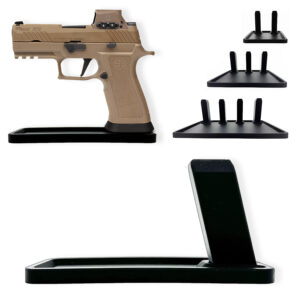
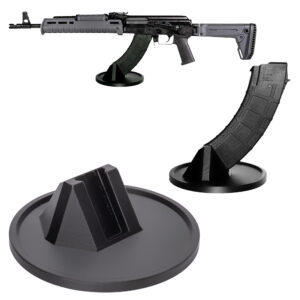

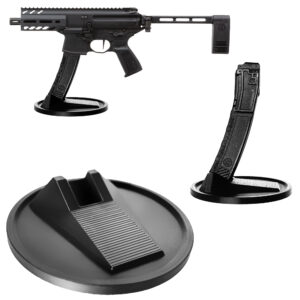
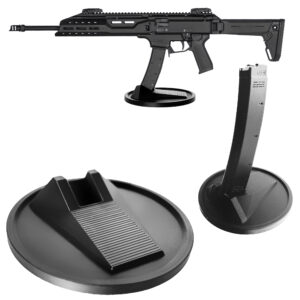


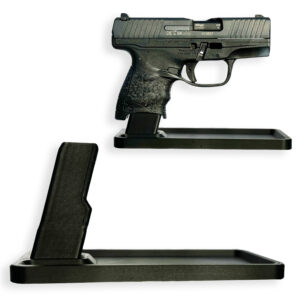
Colt
Colt M4 Carbine
Colt LE6920
Colt AR-15 A4
Daniel Defense
DDM4 V7
DDM4 V9
DDM4 V11
DDM4 ISR (Integrally Suppressed Rifle)
Smith & Wesson (S&W)
M&P15 Sport II
M&P15 Tactical
M&P15T
Bravo Company Manufacturing (BCM)
BCM Recce-16
BCM Recce-14
BCM MCMR Series
Aero Precision
M4E1 Series
AC-15
AR15 Pistol (Various Configurations)
Ruger
Ruger AR-556
Ruger SR-556
Ruger AR-556 MPR (Multi-Purpose Rifle)
Springfield Armory
Saint Victor
Saint Edge
Saint AR-15
PSA (Palmetto State Armory)
PSA PA-15
PSA AR-V
PSA Jakl (AR Pistol)
FN America
FN 15 Tactical Carbine
FN 15 Patrol
FN 15 DMR
Wilson Combat
Recon Tactical
Super Sniper
Protector Carbine
SIG Sauer
SIG M400 Tread
SIG M400 Elite
SIG M400 SDI
LWRC International
IC DI (Direct Impingement)
IC SPR
IC A5
Bushmaster Guns
XM-15 QRC
Bushmaster MOE
XM-15 Patrolman
Rock River Arms
LAR-15 Entry Tactical
LAR-15 Predator
LAR-15 Elite Comp
Stag Arms
Stag 15 Tactical
Stag 15L (Left-Handed Models)
Stag 15 Valkyrie
Noveske Rifleworks
Noveske Gen 4 N4
Noveske Space Invader (AR Pistol)
Noveske Recon
Anderson Manufacturing
AM-15 Optic Ready
AM-15 M4 Carbine
AM-15 Precision Rifle
Adams Arms
AA-15 Piston Rifle
P2 AARS (Adams Arms Rifle Series)
Black Rain Ordnance
SPEC15 Series
BRO Predator
Fallout 15
Diamondback Guns
DB15 Series
DB15CCMLB
DB15EB
Del-Ton Inc.
DTI-15
Del-Ton Echo 316H
Sierra 316M
Windham Weaponry
Windham SRC
Windham VEX-SS
Windham RMCS-4 (Caliber Conversion System)
Christensen Arms
CA-15 G2
CA-15 Recon
CA-15 Titanium Edition
Patriot Ordnance Factory (POF-USA)
Renegade Plus
P415 Edge
Revolution DI
LaRue Tactical
PredatAR
OBR (Optimized Battle Rifle)
LaRue Stealth 2.0
Battle Arms Development
Workhorse Patrol Carbine
BAD556-LW (Lightweight)
Authority Elite Rifle
Faxon Guns
Ascent AR-15
FX-19 (AR Pistol)
Streamline Ultralight Series
KE Arms
KE-15 SLT (Super Lightweight Tactical)
KE-15 Scout Carbine
Primary Weapons Systems (PWS)
MK1 MOD 2-M
MK116 PRO
MK107 (Piston AR Pistol)
ZEV Technologies
ZEV Core Elite Rifle
ZEV AR15 Billet Rifles
Franklin Armory
BFSIII AR-C1
Militia Model
F17-L (Chambered in .17 WSM)
Seekins Precision
SP15 DMR
NX15 Skeletonized Rifle
Havak Bravo
Aero Precision (Additional Models)
EPC-9 (Pistol Caliber ARs)
VG6 AR Rifles
Barrett Guns
REC7 DI
REC7 Gen II
CMMG
MK4 RCE
Resolute 300
Banshee (AR Pistol)
DPMS Panther Arms
Panther Oracle
Panther LR-308
H&K (Heckler & Koch)
HK MR556A1
HK416 (Military Variant)
Rock Island Armory (Armscor)
VR-80 Tactical AR (Shotgun AR Platform)
Troy Industries
Troy SPC-A3
Troy PAR (Pump Action AR)
Wilson Tactical
Tactical Recon AR
Protector Series
F1 Guns
FDR-15 Skeletonized Rifle
BDRx-15 Series
Juggernaut Tactical
JT-15
JT-10 Precision Rifle
AeroSurplus
Surplus AR-15 Rifles (Budget Models)
Thunder Tactical
AR-15 Basic Carbine
Tactical Builder Sets
Radical Guns
RF-15
Forged AR-Series
Dark Storm Industries
DS-15 Featureless Rifles
DS-10 Typhoon
DRD Tactical
Paratus
Aptus AR Rifles
Bear Creek Arsenal
BCA-15
AR Complete Upper Builds
Aero Survival Rifles (ASI)
ASR Tactical Series
Tactical Edge
WARFIGHTER Series
AR-15 Lightweight Rifles
Lone Star Armory
TX15 DMR
TX15 Carbine
HERA Arms
HERA H7
HERA AR-15 Lower Builds
IWI (Israeli Weapon Industries)
Zion-15
DRD Tactical
Tactical Modular Rifles
Quick-Takedown Rifles
V Seven Weapons
1776 Rifle
Hyperlite Rifle
Core Rifle Systems
Core15 Tac III
Core15 Patrol Rifle
Armalite (Original AR-15 Creator)
M15 Tactical
M15 A4 Carbine
DEF15 (Defensive Sporting Rifle Series)
PSA (Palmetto State Armory Additional Models)
PSAK-47 Hybrid (AR-AK Style Hybrid)
PSA Dagger (Pistol Caliber Configurations)
Odin Works
OTR-15
Odin Recon Rifle
Maxim Defense
MDX-508 PDX (Compact AR Pistol)
MDX-510 Rifle